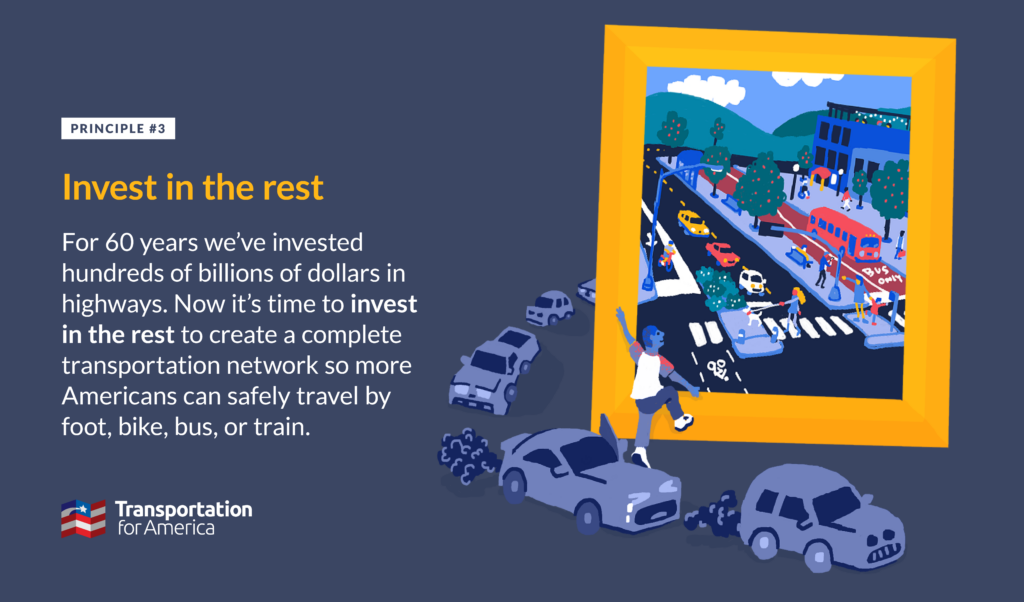For decades, federal highway funding and funding for all other types of transportation (like public transit and opportunities to walk and bike) have been severely unbalanced. In order to reduce greenhouse gas emissions, pedestrian deaths, and traffic, federal leaders must invest in more transportation alternatives.

Have you ever waited for the bus for 20 minutes or felt too close to a truck while riding a bike to work? It’s because the United States has not invested in other ways to travel that do not require a car. Billions of federal funds have been poured into these highways and infrastructure accommodated solely for cars under the guise of fixing congestion and improving transportation for all. However, for decades these costly roadway expansions have only worsened traffic congestion and destroyed established communities in the process.
The United States is unequivocally tied to the concept of multiple choices and free markets. Many grocery stores in the country have a minimum of 8 different types of salt and vinegar chips. When walking into a car dealership, there are a multitude of colors, types, brands, and price points to choose from. But if you want to visit your friend across town, you are likely much more limited—perhaps you can choose between waiting for a bus that will be fifty minutes late or spending $4,000 a year on a car. If our freedom includes having a variety of products to shop for, it can most certainly include a variety of ways to travel.
Our limitation on travel choices is not just an opportunity issue; it affects our environment and public safety as well. The transportation sector in the United States makes up one of the biggest contributors to greenhouse gas emissions. Specifically, light-duty vehicles, like personal cars, make up 57 percent of these emissions. Pedestrians are also being impacted by our lack of investment in safer streets. In 2022, the number of people hit and killed while walking reached a 40-year high with 7,522 deaths.
The Infrastructure Investment and Jobs Act was an unprecedented investment in infrastructure in the United States. Despite this historic investment, our transportation system is still failing millions of Americans. The ratio of investments played no small part in this problem. $432 billion taxpayer dollars went to highways, while only $109 billion went to transit.
As Congress and the next election will dictate the next federal investment in infrastructure, the time to advocate for more transportation options is now. In order to increase transit efficiency, connect more communities to resources, and build safer streets, Congress and the U.S. DOT must invest in the rest.
It’s Invest in the Rest Week. Transportation for America has identified three key principles for the next federal investment in transportation and infrastructure: Invest in the Rest, Fix It First, and Safety Over Speed. Why do they matter? Follow along with us over the next several weeks as we provide explanations and real-world examples of how these principles can help reshape U.S. transportation for the better. Learn more.
The post Time to tip the scales in favor of more transportation options appeared first on Transportation For America.











